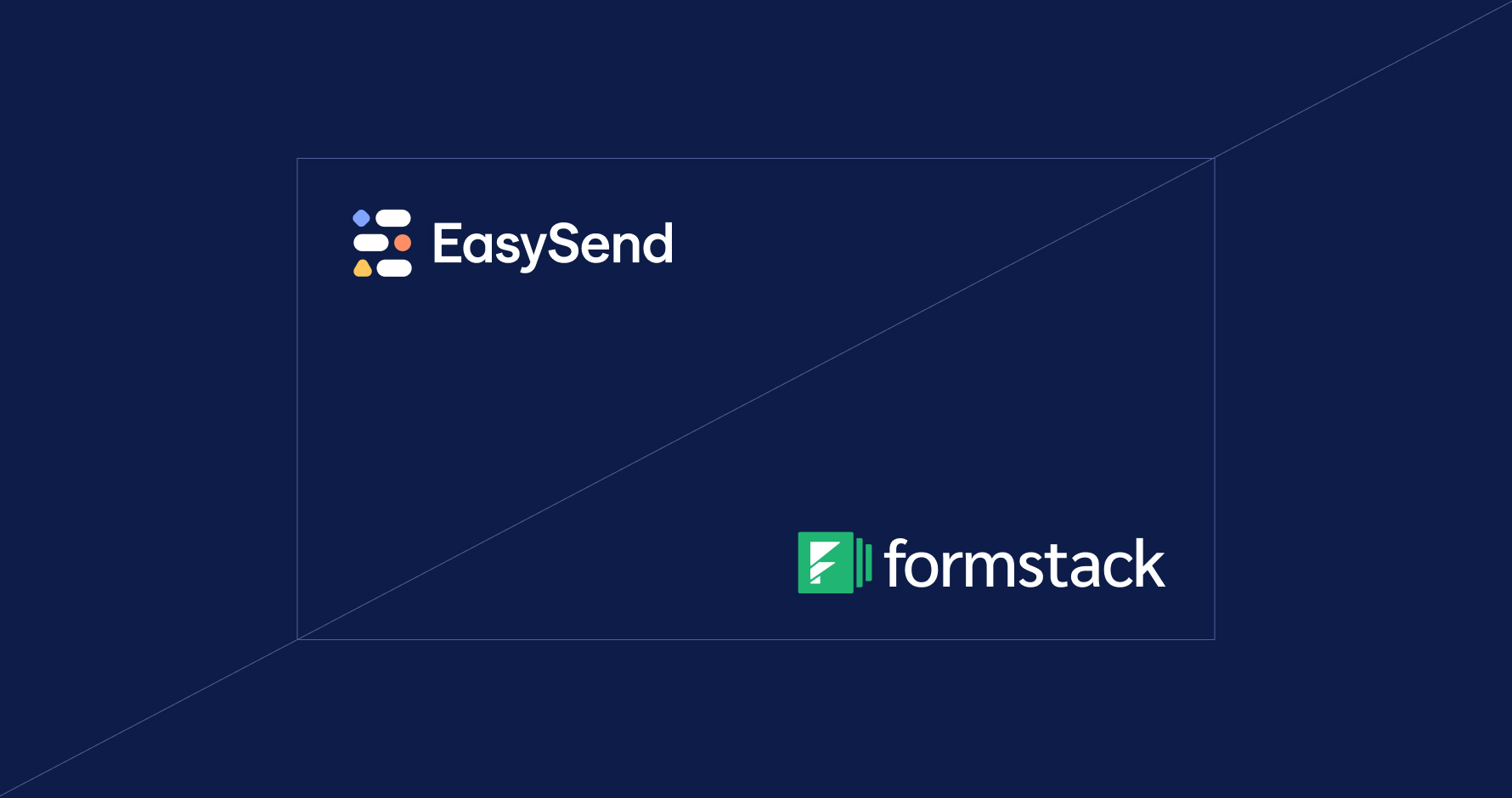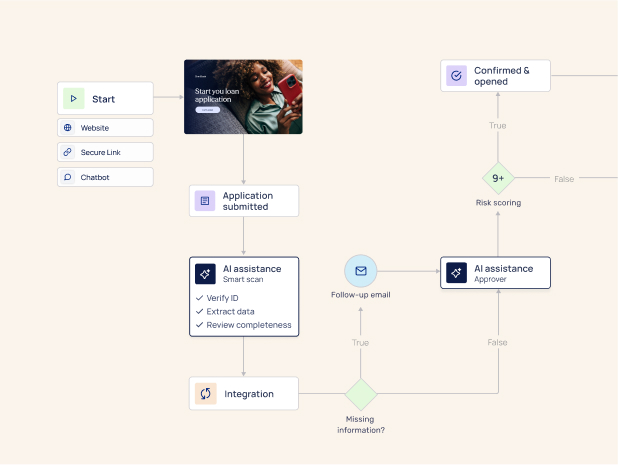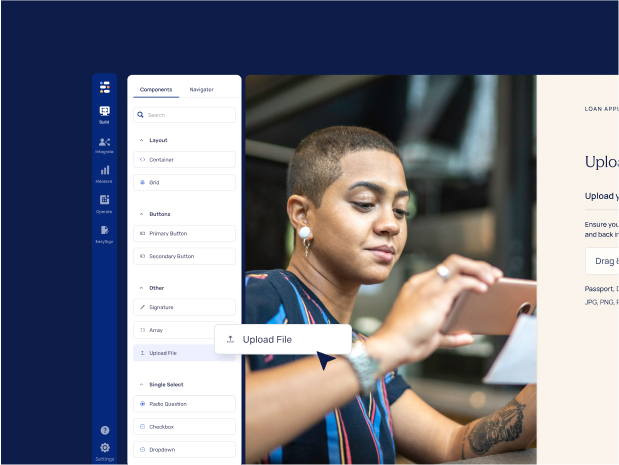What each solution brings to the table
EasySend
Strengths
- Designed for multi-step, multi-party loan journeys (e.g., borrower → co-borrower → guarantor) with branching logic, eSignatures and uploads baked in.
- Built with regulated workflows in mind (loan origination, document intake), with strong support for dynamic logic (show/hide fields based on borrower type, amount, geography), real-time validations and metadata capture.
- Omni-channel delivery: web, SMS link, email, mobile first, with save-and-resume, upload components, compression/duplicate detection.
- Native integration into systems like Salesforce + other core platforms, meaning data captured is mapped, validated, attached to correct records and flows downstream.
- Audit- and compliance-centric: Every file, signature, journey step is traceable.
Limitations
- Because it supports complex journeys, set-up may require more planning and configuration.
- If your use case is simply “one form, one borrower, minimal logic,” it may feel like over-engineering.
Formstack
Strengths
- Strong form builder, widely used for data-collection, surveys, applications; fairly intuitive for building forms and capturing data.
- Good for single-party, one-step data capture workflows: borrowers fill a form, you collect the data, push into your system.
- Offers conditional logic and integrations, making it viable for many standard intake use cases.
- Lower barrier to entry and faster to deploy in simpler contexts.
Limitations
- Less built out for complex, multi-party, multi-step workflows that require branching, document uploads with validations, eSignatures plus sequential/parallel signing, etc.
- The “journey” experience is less advanced: fewer built-in capabilities around uploads + validations + dynamic branching + multi-role workflows.
- For regulated, loan-heavy data capture (with compliance, audit, large document sets) the capabilities start to feel constrained.
Side-by-side comparison for loan data collection
Which works better for loan data collection?
If I were to pick a winner for loan origination with document collection, I’d say: EasySend is the stronger fit, especially when you’re dealing with realistic loan workflows (IDs, pay stubs, tax returns, uploads, multiple parties, signing, system sync). Formstack is still viable, but best for more limited scenarios where complexity and compliance demands are lower.
Choose EasySend when:
- You need borrowers + co-borrowers/guarantors in the same workflow.
- You require document uploads with validations, metadata capture, and audit trails.
- The process spans multiple steps, branches, and roles (e.g., underwriting/reviewers).
- You integrate deeply with CRM/LOS and need real-time data mappings.
- You're in a regulated environment where compliance, traceability and experience matter.
Choose Formstack when:
- You’re collecting loan data in a more straightforward way (one applicant, limited uploads, minimal branching).
- You want to deploy quickly a form for data capture without needing a full journey engine.
- Your document upload/validation/compliance requirements are relatively simple.
Final thoughts
Loan origination isn’t just about capturing data, it’s about guiding borrowers, validating documents, orchestrating multiple stakeholders, and syncing data into systems seamlessly. Formstack is a great form builder, but when your workflow becomes a “journey” rather than a “form,” you’ll find EasySend delivers better alignment with loan origination demands.
Would you like me to generate a full comparison guide (with call-outs for pricing tiers, integration support, example loan flows) that you can use as a hand-off doc to your operations team?





